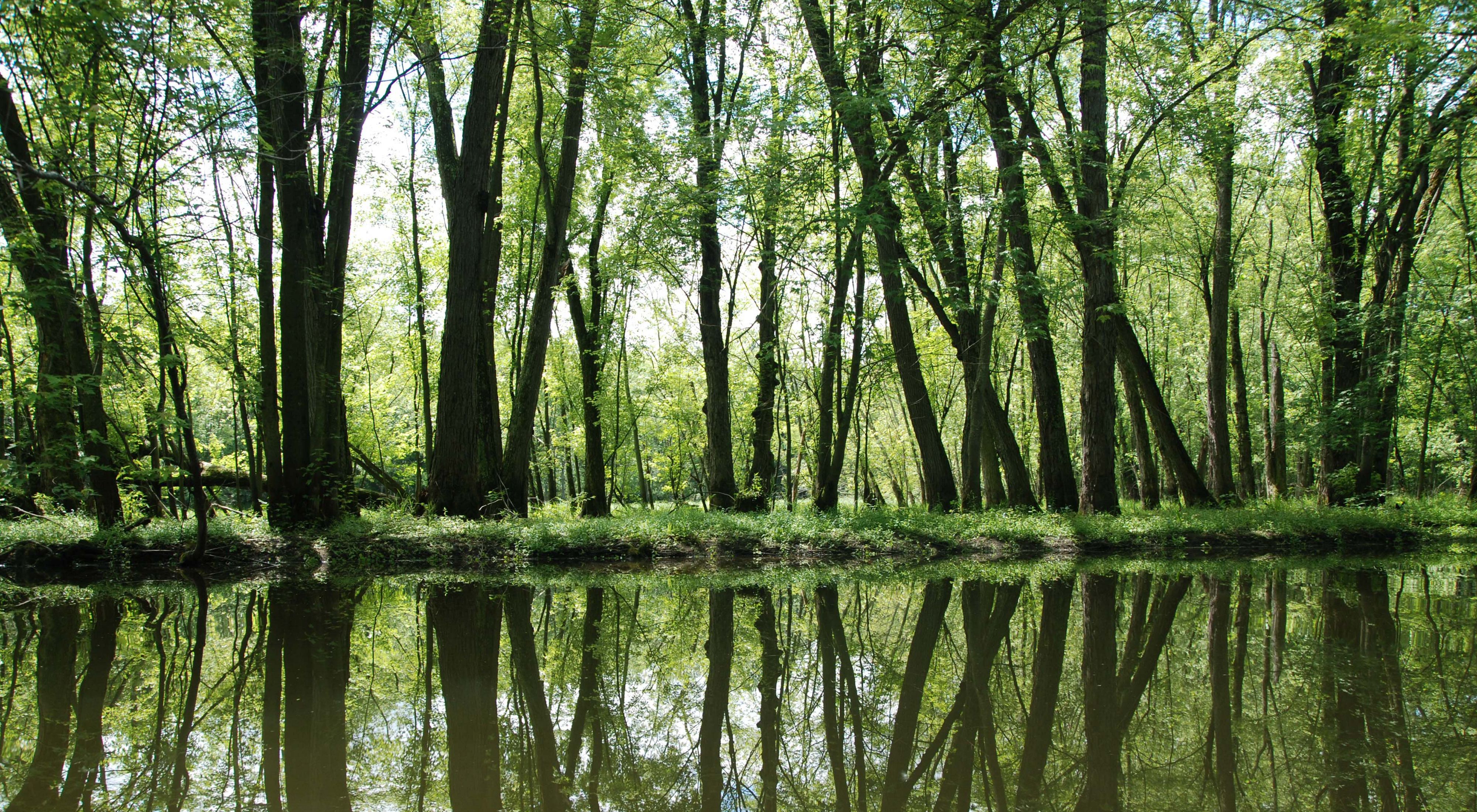The Nature Conservancy Demonstrates New Low-Cost River Restoration Approaches to Improve Flood Resiliency and Water Quality
Media Contacts
-
Ariana Cano
Marketing and Outreach Coordinator
Phone: 802-613-7355
Email: acano316@gmail.com
WEST HAVEN, Vt. – The Nature Conservancy has completed a low-cost river restoration project along one mile of Hubbardton River tributaries at its Hubbardton River Clayplain Natural Area in West Haven, Vermont. The restoration project demonstrates new techniques for improving wildlife habitat, reducing downstream pollution, and improving flood resiliency at low cost.
Approximately 75 percent of Vermont’s rivers, adjacent floodplains, and wetlands are in poor physical condition due to centuries of dredging, straightening, and armoring Vermont’s waterways to make way for buildings, roads, and agriculture. The degraded condition of these rivers has contributed to nutrient pollution in lakes and ponds, loss of river and wetland habitat, and increased flood impacts to our homes, businesses, and roadways.
“Our natural and human communities are being challenged by a changing climate that results in increased precipitation in Vermont,” said Eve Frankel, State Director for The Nature Conservancy in Vermont. “The ways in which we help our waterways connect to their floodplains will both improve water quality and increase flood resiliency. This project is a low-cost example among a suite of solutions to address these challenges.”
The Nature Conservancy owns and manages 58 natural areas in Vermont where staff and partners can test improved ecological restoration and management techniques in a living lab model. This project was piloted to model a new low-cost river restoration approach that can be applied broadly to degraded rivers throughout Vermont.
The project was implemented over a total of thirty days between the spring 2022 and fall 2023, over which time it served as a demonstration site for restoration practitioners, resource managers, conservationists, and researchers. The project included traditional river restoration activities such as removal of an abandoned farm road culvert, while also including the low-cost activities, such as: installing wood jams and stick-built dams that mimic natural processes that move waters onto floodplains where nutrients will be filtered and stored instead of flowing to downstream waters. Water-loving shrubs and trees were planted and will help slow water and also provide food and habitat to a variety of animals that inhabit and benefit freshwater ecosystems.
To maximize the opportunity to expose practitioners to the novel restoration approach, The Nature Conservancy employed multiple organizations to collaborate on the project, including Fitzgerald Environmental Associates, Habitat Restoration Solutions, Redstart Natural Resource Management, the Poultney-Mettowee Natural Resources Conservation District, and the Vermont Youth Conservation Corps.
Funding for the project was provided by the Department of Environmental Conservation's Clean Water Initiative Program through a grant from Watersheds United Vermont, the Cotyledon Fund, the Vermont Association of Conservation Districts, and Pur Projet.
The Nature Conservancy is a global conservation organization dedicated to conserving the lands and waters on which all life depends. Guided by science, we create innovative, on-the-ground solutions to our world’s toughest challenges so that nature and people can thrive together. We are tackling climate change, conserving lands, waters and oceans at an unprecedented scale, providing food and water sustainably and helping make cities more sustainable. The Nature Conservancy is working to make a lasting difference around the world in 77 countries and territories (41 by direct conservation impact and 36 through partners) through a collaborative approach that engages local communities, governments, the private sector, and other partners. To learn more, visit nature.org or follow @nature_press on X.
